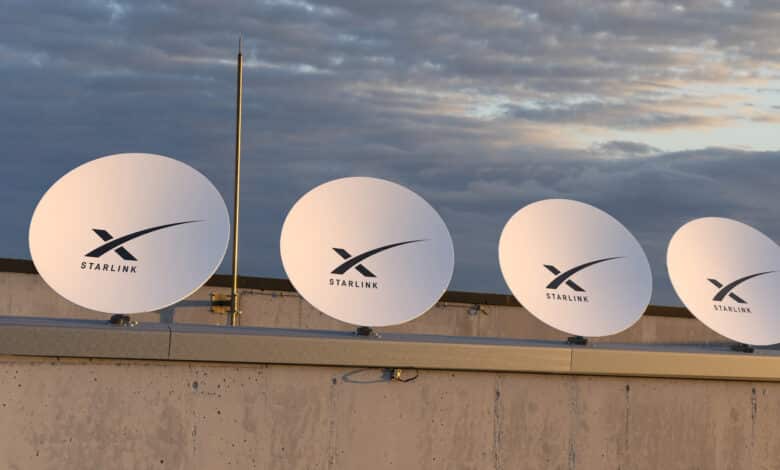
With the help of Starlink, even people in remote regions of the world can enjoy reliable and fast Internet. But the associated satellites are increasingly causing problems. Now a meteorologist from the Netherlands warns that they could significantly reduce the reliability of weather forecasts.
Starlink interferes with weather satellites
Starlink has been providing satellite internet to war zones and places with poor infrastructure since 2020. Currently, for example, Ukraine can also use the Internet of the company founded by Elon Musk in its war against Russia. But as the number of satellites increases, there also appear to be problems. Astronomers, for example, fear that people will have problems looking into space in perspective. The problem will worsen as other projects besides Starlink, such as Amazon’s 2023 launch Project Kuiper, seek to populate space with its satellites. While astrologers fear the poorer view into space, astronauts in turn are afraid that the many satellites could become a danger for space stations.
Now more people are coming forward to express grave concerns. After all, according to Ad Stoffelen, a Dutch expert in satellite technology, problems could arise for the reliability of weather forecasts. But here, Starlink’s receiving antennas located on Earth seem to pose a bigger problem than the satellites themselves. The signal they emit is often interpreted by weather satellites as natural radiation from water vapor. The employee at the KNMI meteorological institute said this during an interview with the online portal Nu.nl. In his view, before issuing too inaccurate weather reports, it would be better to leave out certain regions with too many Starlink antennas.
Worse forecasts for the entire globe?
Now, you might think that leaving certain small patches of the globe out of weather reporting is not a problem. But this is by no means the case. After all, there are regions whose climate is relevant for the entire earth and its weather development. For example, the North and South Poles. Unfortunately, it is here of all places that Starlink has a relatively large number of antennas due to various research stations. According to Stoffelen, this could lead to a problem of global proportions. With the expansion of satellite Internet by other companies as well, the whole thing is likely to get even worse. That’s why meteorologists around the world are also extremely concerned, according to the expert. The colleagues of heise online checked with the German Weather Service. This does not divide the concerns of its Dutch colleague however obviously.



